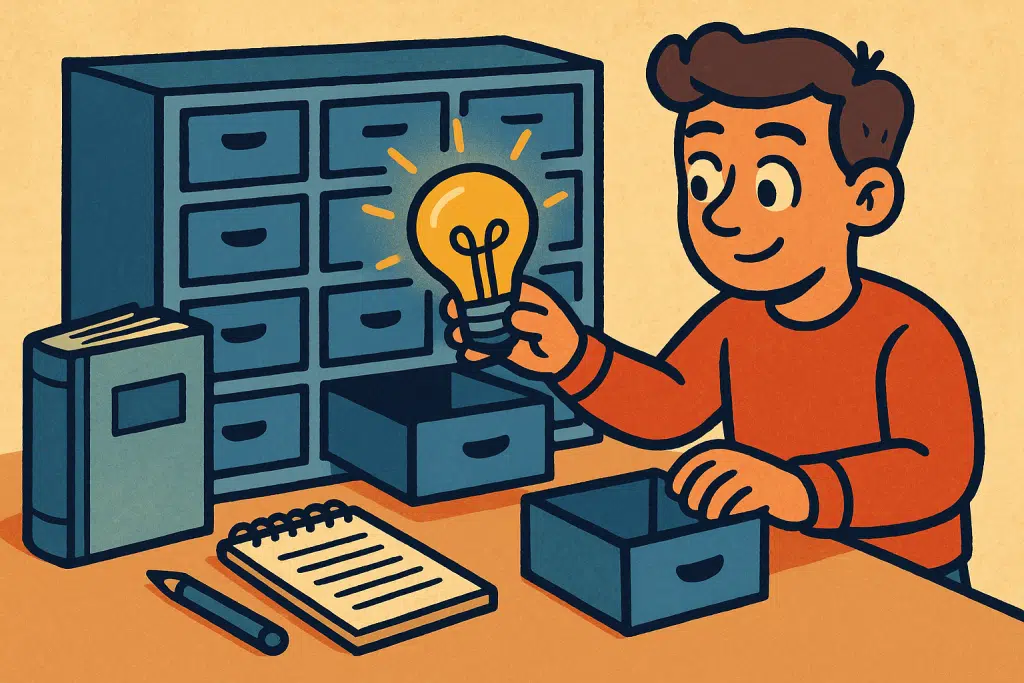Idea Storage Is Not Just Archival
Charlotte Stone July 30, 2025
In today’s innovation economy, ‘idea storage is not just archival’ isn’t just a slogan—it’s a strategy businesses are using to gain real and competitive advantage. Idea storage is not just archival it’s about harnessing past and present ideas to fuel future breakthroughs. Discover why modern systems act as innovation engines, not dusty vaults.

Why “Idea Storage Is Not Just Archival”—It’s Innovation Currency
Traditionally, idea storage conjures images of file folders, forgotten whiteboard scribbles, and shared drives crammed full—unindexed, unused, and essentially dormant. But a shift is underway. Organizations now see idea storage platforms as dynamic archives: curated, tagged, searchable repositories that power creativity and decision‑making.
- Historical archives aid branding and cultural cohesion, but alone they don’t drive innovation. True value lies in surfacing ideas for reuse, resuscitation, and inspiration in new contexts.
- Idea management systems act as active platforms: capturing, evaluating, enriching, and mobilizing ideas into projects and products.
- Emerging AI‑driven analytics apply idea mining and natural language processing to convert raw submissions into structured data workflows.
Emerging Trends Transforming Idea Storage
1. AI‑Powered Idea Mining & Insight Discovery
Modern platforms use AI, NLP, and machine learning to comb through unstructured ideation inputs—emails, forums, proposal texts—auto‑tagging and clustering themes. In academic research, idea mining systems improved the quality of creative discovery by 50–60% over manual methods. This means idea storage becomes searchable innovation capital.
2. Data‑Driven Innovation Processes
Rather than archiving, organizations tap into data-driven innovation (DDI) frameworks: integrating idea sources (customer feedback, patent databases, internal suggestions) into a structured innovation pipeline. This alignment transforms storage into actionable insights.
3. Distributed Ideation as Core Capability
Hybrid and remote work trends have made ideation more distributed. Companies empower employees worldwide to contribute ideas asynchronously into centralized repositories. This distributed co‑re capability elevates storage beyond simple collection—it becomes a living network fueling organizational creativity.
4. Workflow Automation & Idea Follow‑Up
It’s not enough to store ideas—modern platforms automatically route promising ones into evaluation workflows: challenge owners, scoring ballots, collaborative refinement, and execution planning. The follow‑up of ideas adds organizational memory and institutional learning, which supports future innovation cycles.
5. Integration with Business Intelligence & Analytics
Advanced tools embed idea data into dashboards—tracking idea origin, votes, conversion rate to projects, ROI estimates, time‑to‑market metrics. This innovation analytics empowers decision-makers to prioritize high‑impact ideas and measure progress systematically.
How to Build an Idea Storage System That Does More Than Archive
Step‑by‑Step: From Archive to Innovation Engine
- Capture Ideas Seamlessly
Encourage submissions from all stakeholders—employees, customers, partners—via multiple channels (portals, apps, emails, surveys). Centralize all inputs in a unified repo. - Structure via AI‑Driven Processing
Use AI/NLP to auto‑classify ideas by theme, sentiment, feasibility, and strategic fit. Idea mining tools help cluster similar proposals for easier evaluation. - Enable Transparent Evaluation & Workflow
Route ideas automatically to reviewers, assign scoring tasks, allow crowdsourced voting, and move top ideas into prototyping or pilot workflows. Ensure idea follow‑up is tracked, and contributors get feedback. - Integrate with Analytics & Reporting
Connect idea data to BI tools like Power BI or Tableau to visualize progress at each stage—submission volume, idea funnel conversion, ROI estimates, and engagement metrics. - Re‑use and Re‑engage Stored Ideas
Don’t let old proposals sit idle. Surface historical ideas when teams face similar challenges. Use idea vaults as archives of insight and source material for new innovation sprints.
Real‑World Examples & Use Cases
- Crowd‑powered ideation platforms like Planview IdeaPlace gather, evaluate, and execute ideas across distributed teams, turning storage into a living pipeline for innovation.
- Companies using open innovation platforms like HeroX and Qmarkets incorporate external crowd contributions into their idea storage systems—then route them into business cycles systematically.
- Enterprises employing machine‑driven idea mining tools automatically analyze patent publications, internal documents, and social media to surface insights previously buried in noise.
Benefits of Treating Idea Storage as Innovation Fuel
- Faster time to market: streamlined evaluation and routing cut decision delays.
- Better idea utilization: AI surfacing unused gems from legacy backlog—ideas that might solve new problems.
- Stronger innovation culture: contributors feel heard, and see ideas move ahead.
- Data‑backed decisions: metrics-driven prioritization ensures resources go into high‑impact ideas.
- Historical intelligence: archived knowledge helps learn from past successes and failures for continuity.
Challenges and How to Overcome Them
| Challenge | Solution |
|---|---|
| Data overload; low signal‑to‑noise | Use AI classification to filter & tag ideas. |
| Cultural resistance to formal process | Provide feedback, rewards, recognition. |
| Integration with existing systems | Choose platforms with ERP/BI/CRM connectors. |
| Trust in AI analytics | Start human‑in‑the‑loop; show pilot results. |
The Future of Idea Storage
Looking ahead, we expect:
- Agentic AI (AI that makes decisions) to handle initial idea triage autonomously, forwarding only viable candidates to human review.
- Digital threads connecting idea origin to final output—tracking entire lifecycle seamlessly.
- Sustainability‑oriented analytics: identifying ideas that meet ESG goals, aligning innovation with corporate responsibility.
- Blockchain‑based audit trails to ensure idea provenance, contributions, and approvals remain tamper‑proof.
Summary: Why Idea Storage Is Not Just Archival
- It shifts from passive storage to active innovation engine.
- AI and idea mining turn raw submissions into structured insight.
- Integrated workflows, analytics, and dashboards connect storage to execution.
- It fosters culture, data‑backed decision making, and reuse of organizational memory.
- Emerging trends suggest increasingly autonomous, transparent, and strategic idea ecosystems.
How “Idea Storage Is Not Just Archival” Makes Your Organization Smarter
By treating past ideas not as old files but as reusable assets, you’re embedding innovation into your company’s DNA. This approach makes the statement idea storage is not just archival a visible practice, not just a catchphrase.
Invest in platforms and practices that see idea storage not as a passive afterthought but as an active seat at the innovation table. That transformation—that shift from dusty vaults to dynamic engines—defines the future of innovation-ready organizations.
References
- Inie, N. & Dalsgaard, P. (2020). How Interaction Designers Use Tools to Manage Ideas. arXiv. https://arxiv.org
- Zepeda Mendoza, M. L., Agarwal, S., Blackshaw, J. A., et al. (2024). A framework for developing a knowledge management platform. arXiv. Retrieved from https://arxiv.org
- RealKM. (2025). Introducing knowledge management into archival work. RealKM blog. Retrieved from https://realkm.com







